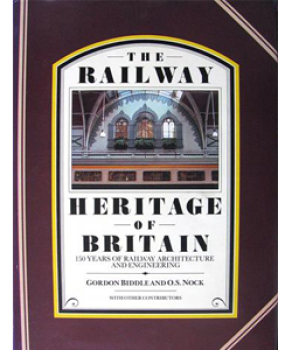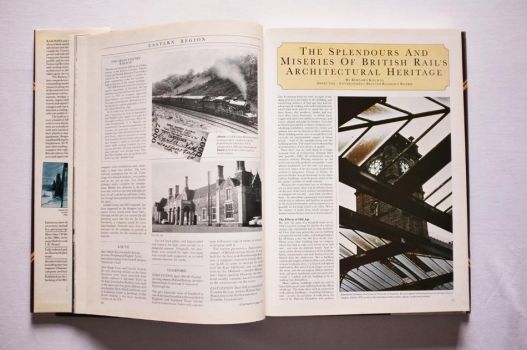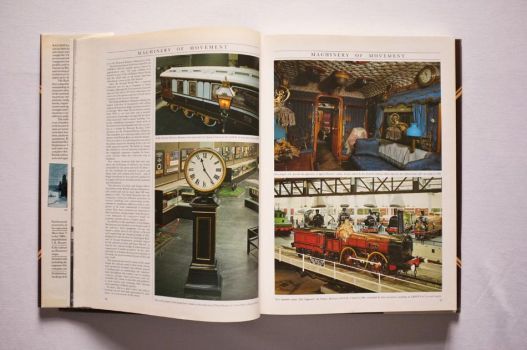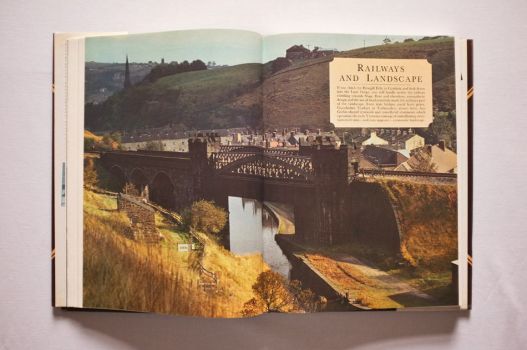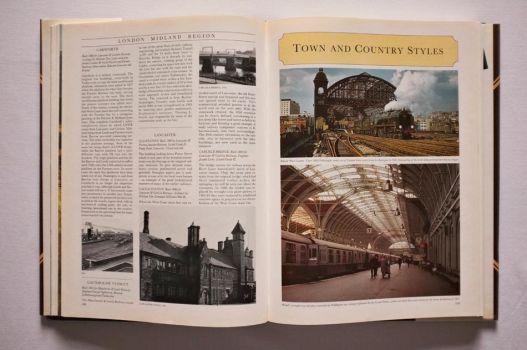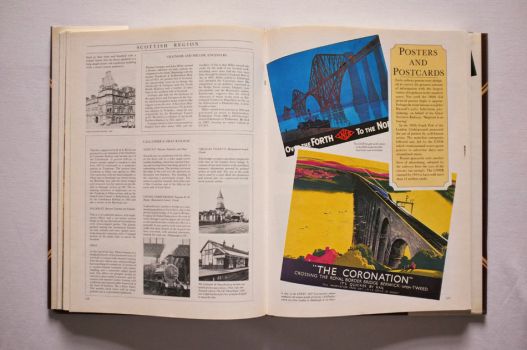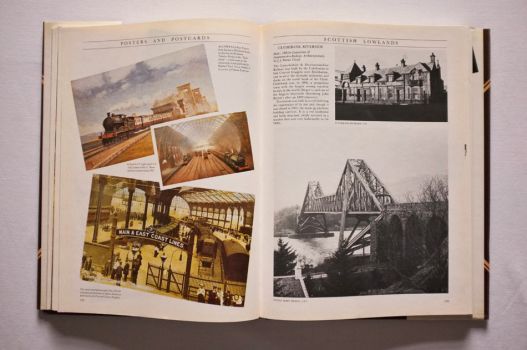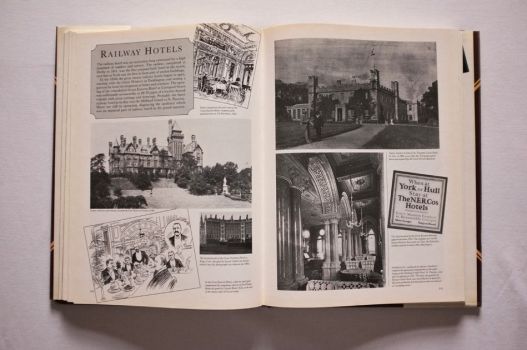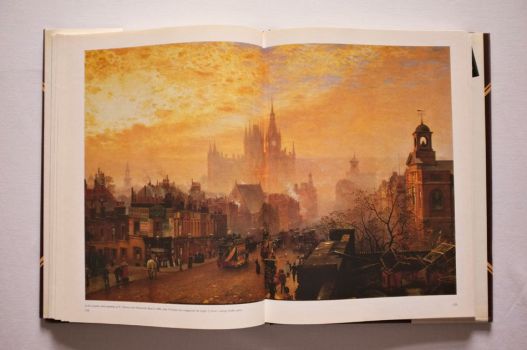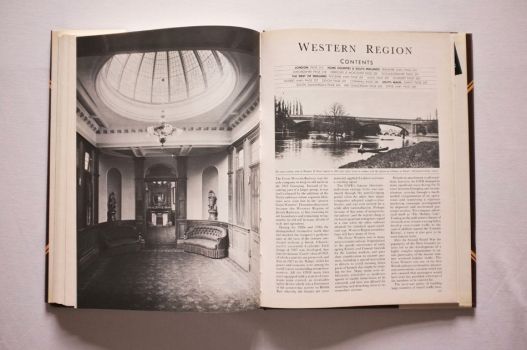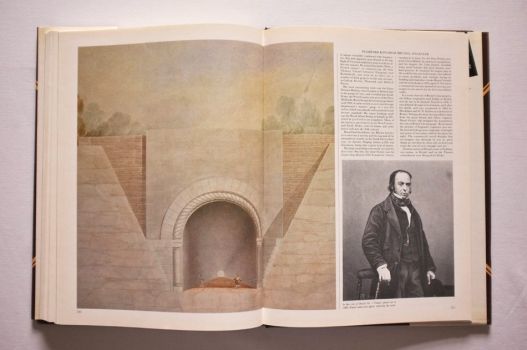-
“This book is beautifully laid out and makes fascinating reading.”
-
“Comprehensive and reliable, yet attractively produced, lavishly (and often evocatively) illustrated and very reasonably priced.”
The Railway Heritage of Britain
150 Years of Railway Architecture and Engineering
O. S. Nock & Gordon Biddle, with a Foreword by Sir Peter Parker
£30.00
The Railway Heritage of Britain is the first comprehensive illustrated guide to the outstanding landmarks and little known treasures along the main and branch lines of the national network. There are entries on more than 500 historic railway structures, as well as over 750 illustrations. The book is fully indexed and cross-referenced, with an illustrated glossary and specially drawn maps.
9 in stock
Dispatched next day with Royal Mail 2nd Class
- RRP: £30.00
- Format: 292 x 216 mm (11 1/2 x 8 1/2 in)
- Pages: 272
- Weight: 1.4 kg (3.1 lb)
- Pictures: 700 b/w and colour
- Binding: Hardback with jacket
- ISBN: 978-0-7181-2955-0
- Publication: 1990
150 Years of Railway Architecture and Engineering
Railways and railway stations have always been associated with romance, adventure and the pioneering spirit. They caught the Victorian imagination, and the proud and individual railway companies became some of the most prolific and inventive builders of the Industrial Revolution. The Railway Heritage of Britain covers an enormous variety of subjects: not only stations, bridges, tunnels and viaducts but hotels, engine sheds, warehouses, water towers and signal boxes, crossing keepers’ cottages and war memorials.
The railway network was built by well over a hundred different companies, each with its own distinctive style. All the main ones are introduced in the book, together with their locomotives and rolling stock, their platform signs, tickets and operating equipment. Biographical portraits of Isambard Kingdom Brunel, Robert Stephenson, Sir William Tite, the Cubitts and other leading architects and engineers complete this region-by-region history of British railway building as it can still be seen and appreciated today.
HOW TO USE THIS BOOK
INTRODUCTION
EASTERN REGION
SPLENDOURS AND MISERIES OF BRITISH RAIL’S ARCHITECTURAL HERITAGE
LONDON MIDLAND REGION
SCOTTISH REGION
SOUTHERN REGION
WESTERN REGION
GLOSSARY OF TERMS
APPENDIX: BRITISH RAIL’S LISTED BUILDINGS
PICTURE CREDITS
ACKNOWLEDGEMENTS
INDEX
Gordon Biddle is a past President of the Railway and Canal Historical Society and a leading authority on railway architecture in Britain. He is the author of Victorian Stations, The British Railway Station (with Jeoffry Spence), Railway Stations in the North West and Great Railway Stations of Britain: Their Architecture, Growth and Development as well as three volumes on canals and waterways.
O. S. Nock(1927-1994) was one of the most prolific railway writers in Britain. Formerly Chief Mechanical Engineer of the Westinghouse Brake and Signal Company, he was the author of more than 100 books on locomotives, engineers, railway companies, signalling and railway operation in Britain and overseas.
Further contributions by Martin Robertson, John R. Hume, Jeoffry Spence and Jack Simmons
INTRODUCTION
No one who travels by rail can fail to notice that he is using an old form of land transport, the first in fact to offer an advance on horse power. The trains may be modern or relatively so, but neon signs, petrol stations and all the clutter and ribbon development associated with the ubiquitous motor car are comparatively absent along the railway lines. The countryside very often comes up to the tracks, the scene is more pastoral, still recognisably the world portrayed by the early railway artists such as J. C. Bourne, A. F. Tait and many others, in which sheep grazed beneath the viaducts and the carriage-borne gentry travelled out to admire the ornamental tunnel portals and the steam horses of the iron roads.

WINGFIELD
Built 1840 for North Midland Railway. Architect Francis Thompson. Listed Grade II. Between Derby and Chesterfield. Closed and sold.
Here is the entry for Wingfield in the North Midlands, picked as an example to demonstrate the layout used for each structure included in the book. For speed and ease of reference, all 500 entries start like this with a gazetteer in italics stating where known the date built, the company, the architect, listing grade, location and status.
PERTH
STATION. Built 1847. Architect Sir William Tite. Extended 1865; from 1866 owned jointly by Caledonian, North British and Highland Railways.
Perth is a remarkable station in several respects, and is well named ‘the Gateway to the Highlands’; before the Grouping of 1923 it was here that enormous volumes of summer traffic were exchanged with the Highland Railway. In the summer of 1923, for instance, 25 major long-distance expresses containing sleeping cars, Pullmans and through coaches to and from a wide variety of destinations were re-marshalled at Perth each day for the south-bound direction.
For its design Tite clearly copied many features from his station at Carlisle, particularly the generally Tudor styling and the turret. The main footbridge (added later) is virtually a replica of the Carlisle footbridge.
The fine two-storey buildings have had several extensions over the years, and at one time housed three separate booking offices, for the Highland, the Caledonian and the North British. The old refreshment room still retains its Corinthian columns, deep panelled ceiling and marble fireplace, relics of more prosperous times.


